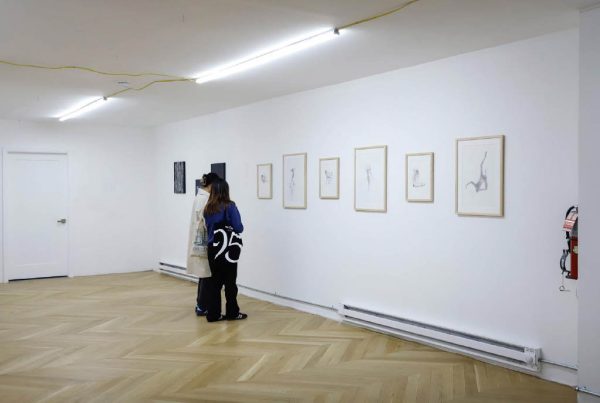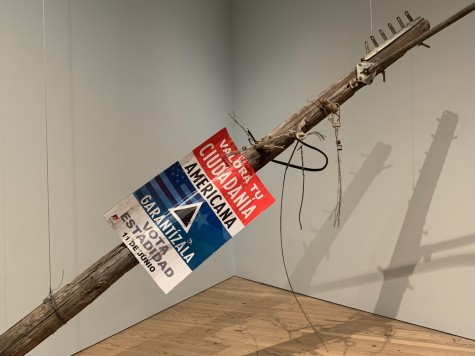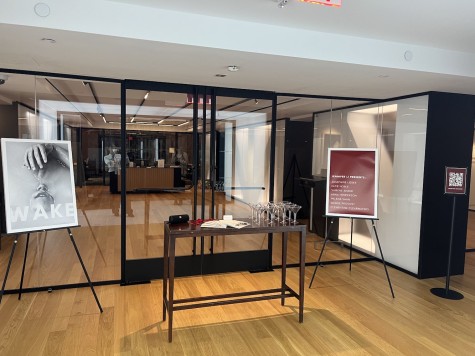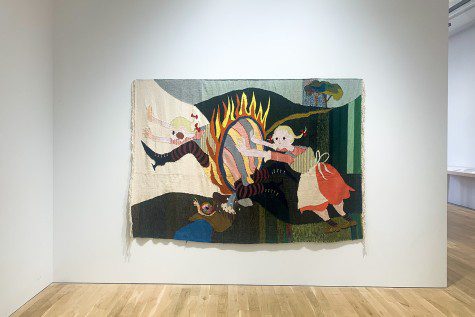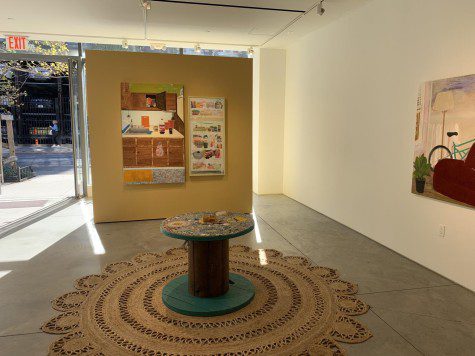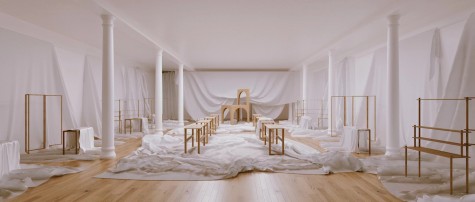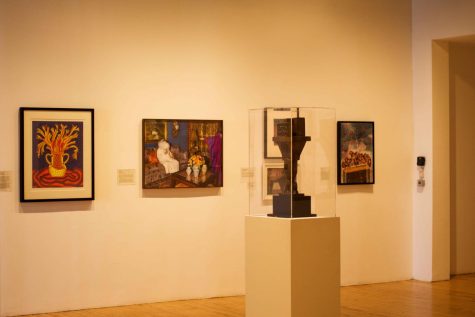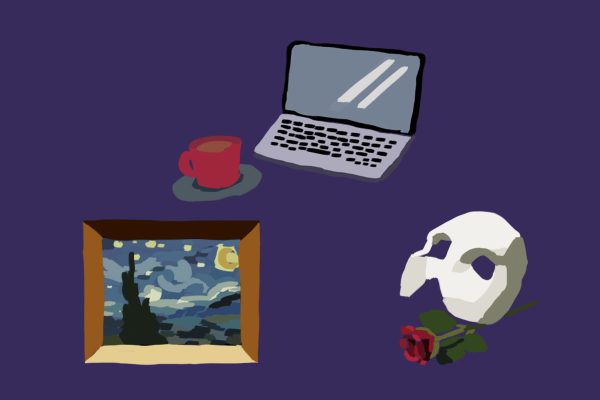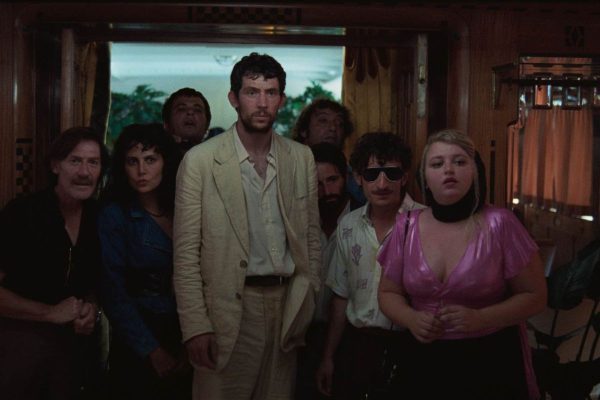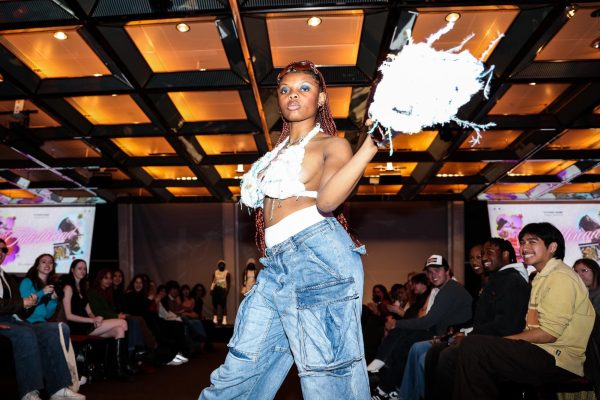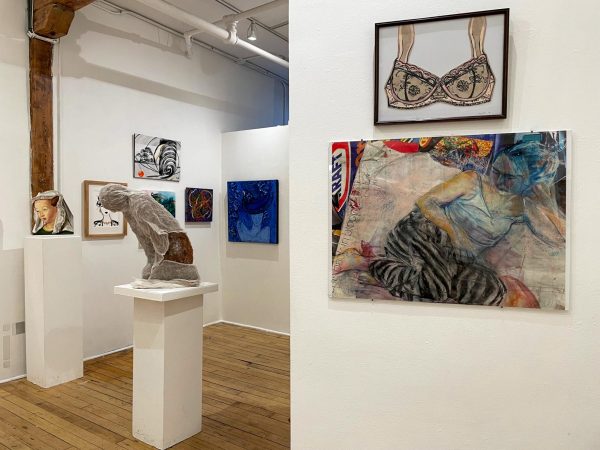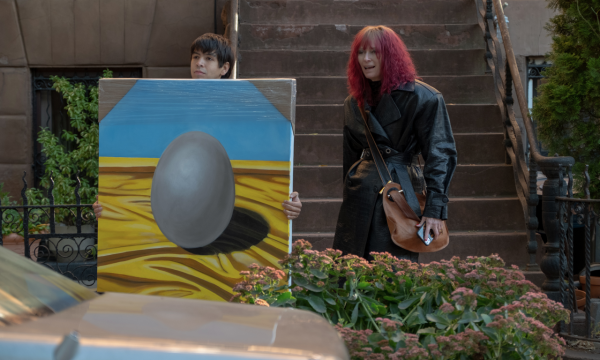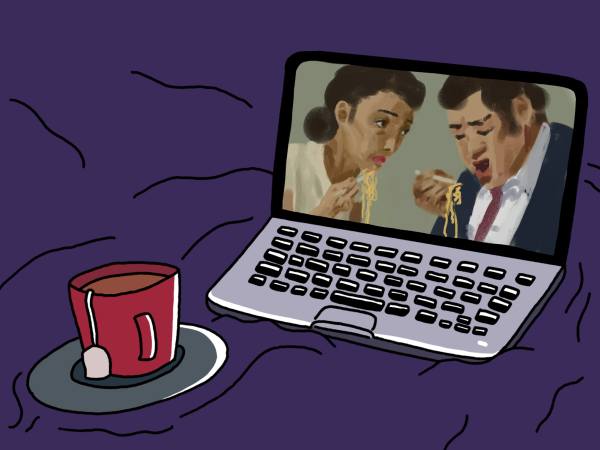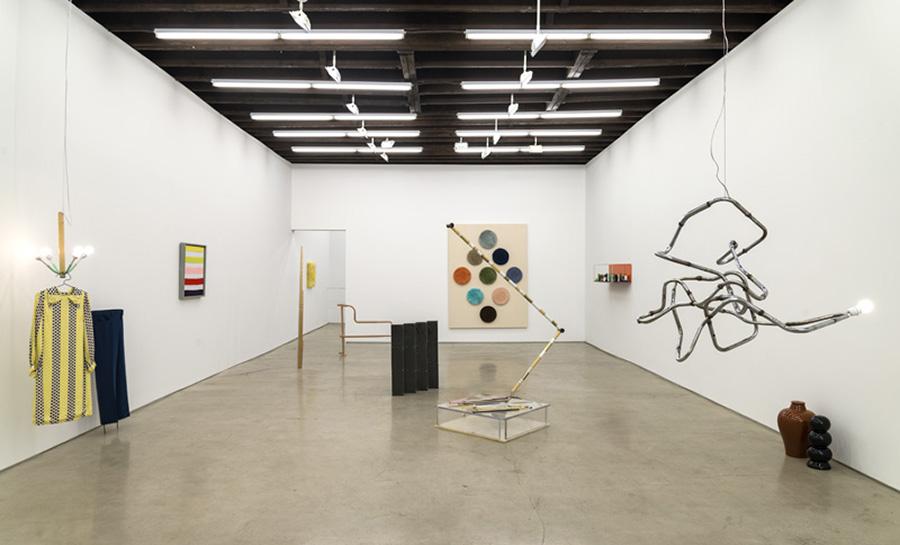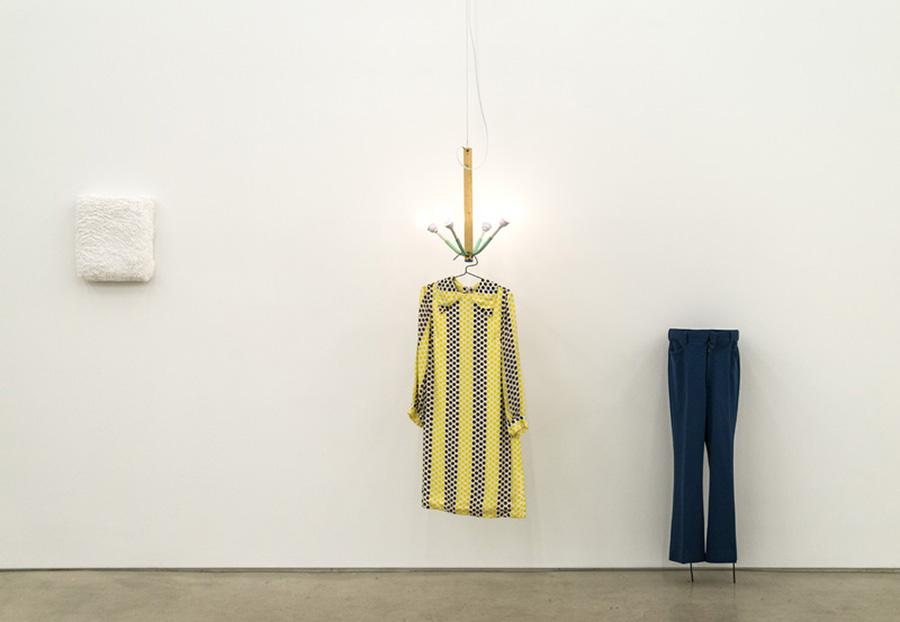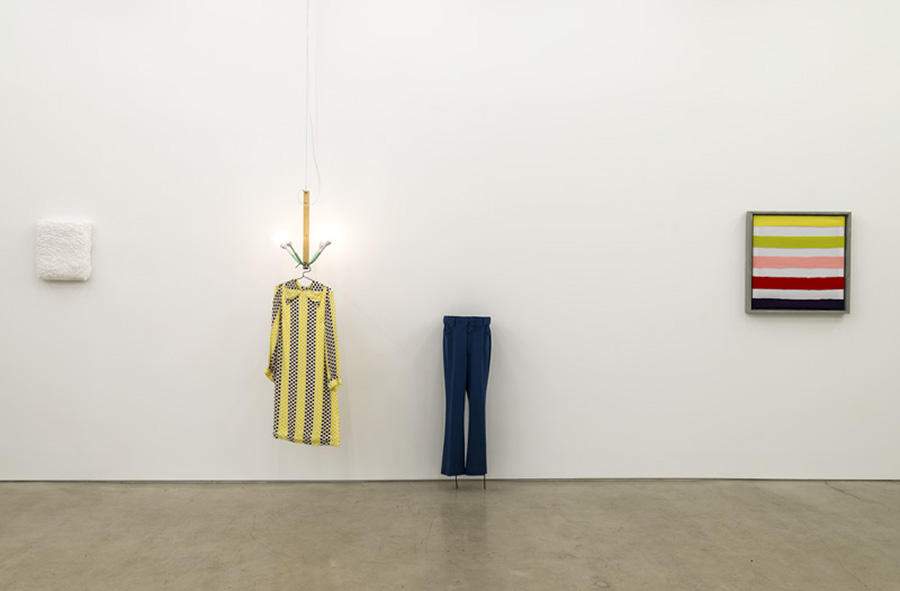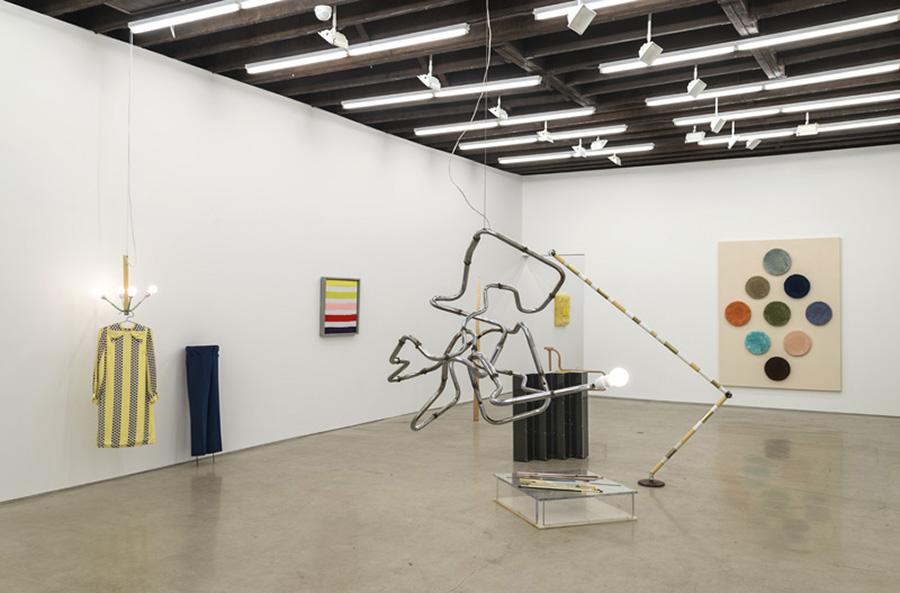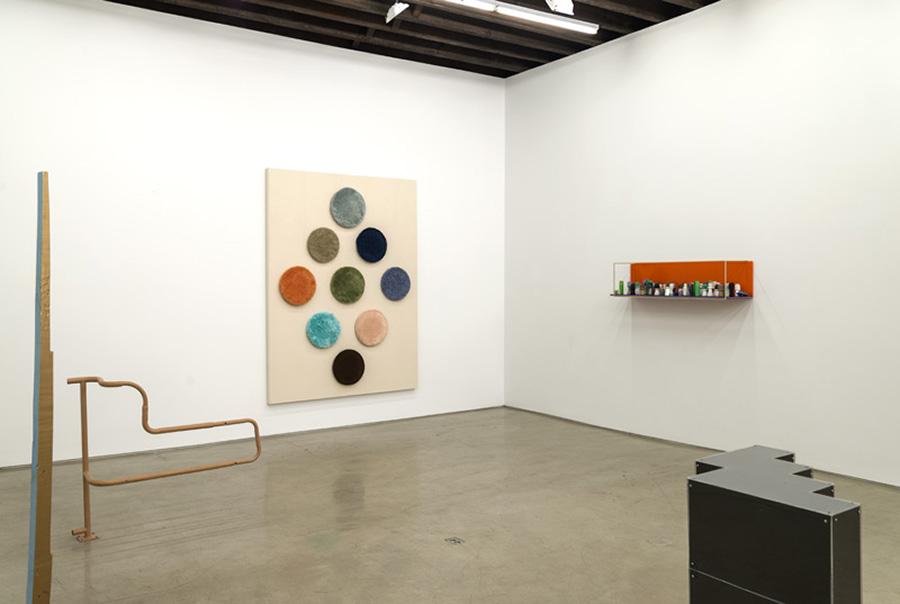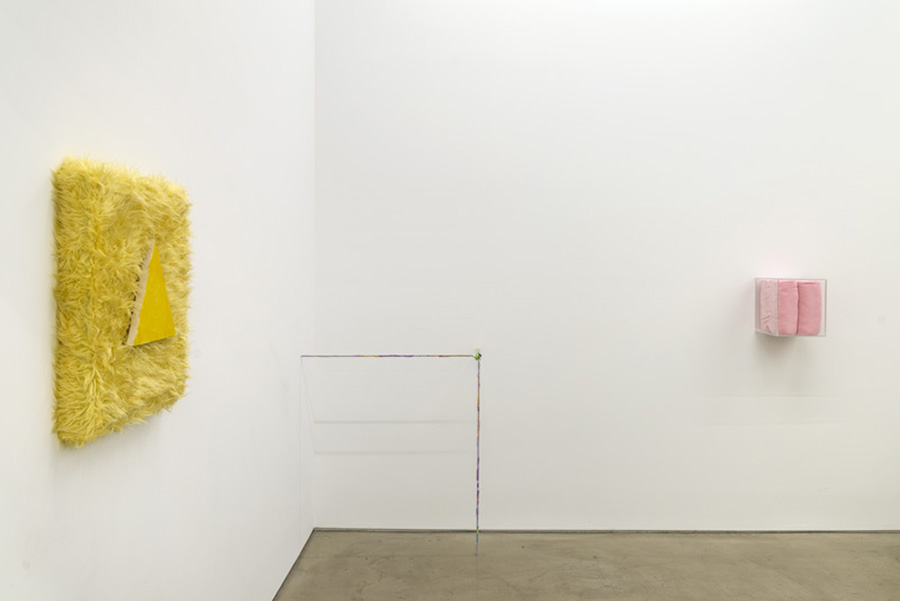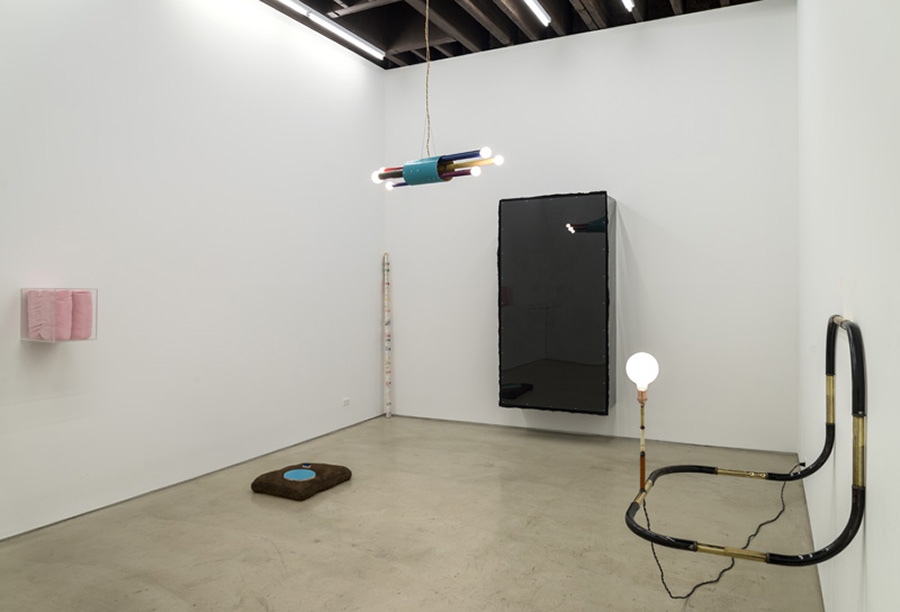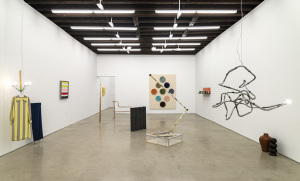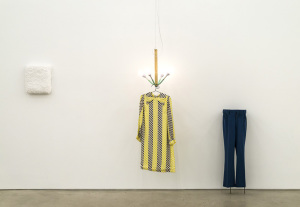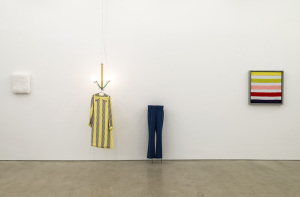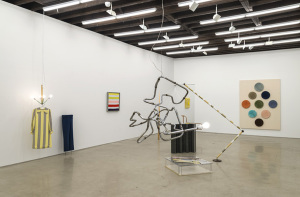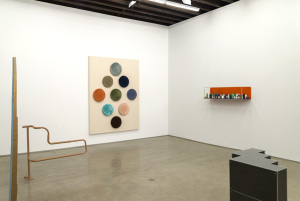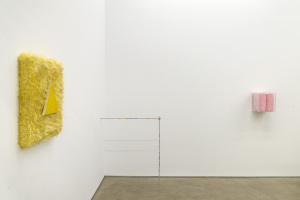Exhibit challenges object perception
Related Stories
Andy Coolquitt’s “somebody place,” which opened at Lisa Cooley on Sept. 7, is an experience of displacement.
One of the most notable pieces in the exhibit is “Neo-Deo: Open Market, Open Vitrine, & Deo-Liberal Potentialities,” which features about 50 plastic figures shelved on blue glass with orange glass behind them.
The plastic figures, about the size of a fist, vary in shape and color, although they are all domed on top. The most striking thing about the assortment is how familiar all the objects seem — they were recognizable yet somehow unidentifiable. A little research reveals that they were once containers for deodorant.
This motif of out-of-place objects continues throughout the exhibition in pieces such as “pure/gold/plum/splendor/subtle/sage” and “build/cut/rear/seam/black/slut/suck/step,” in which Coolquitt places a carpet and the beginnings of a staircase — two things that are expected to be on the floor — onto a wall. This challenges the perspective of the viewer. Maybe the rug and stairs are in their rightful place on the floor, but only if the viewer is standing on the wall.
“Somebody place” also toys with opposites such as dirty and clean; scuffed and shiny; and hard and soft. In “i’ve gotta take this,” a plush pink blanket fills a hard, sharp-cornered glass cube that protrudes from the wall.
Another challenge in perspective comes from the work “Momentum Activation Exercise: Core sample Portrait/Landscape Axis Shift.” Looking at the piece dead-on, it appears to be a six-foot-tall, two-inch-wide watery apparition of colorful, mysterious rings. Viewed from the side, it is revealed to be spools of thread stacked behind a tall, glass-like acrylic cylinder.
In the last work of the progression, simply titled “twin,” Coolquitt challenges reality yet again. A six-foot by three-foot panel of glass covers black fabric mounted to the wall. Staring at the work, one ends up staring at oneself, or, as the title suggests, one’s twin, in the reflection of the glass. Coolquitt’s final act of the exhibition is to pull the viewers themselves out of context.
“Twin” is not what one expects to see on a day-to-day basis, nor is it necessarily desired or expected. This change in function indicates a change in reality, begging the question whether this twin is really the viewer at all, or some other object created by Coolquitt.
By taking common objects out of context, Coolquitt renders the commonplace bizarre, enigmatic and, at times, unrecognizable. He challenges the belief in familiarity of even the most basic material aspects of day-to-day reality. Deodorant is for hygiene, a carpet is for walking on and a blanket is for sleeping. When these items are taken out of the context of their function, they appear to be different objects entirely. Coolquitt seems to ask whether the realities of the environment are based on the function of the objects within that environment.
“Somebody place” will run until Oct. 19
A version of this article appeared in the Tuesday, Sept. 16 print edition. Email Leah Gross at [email protected].























































































































































